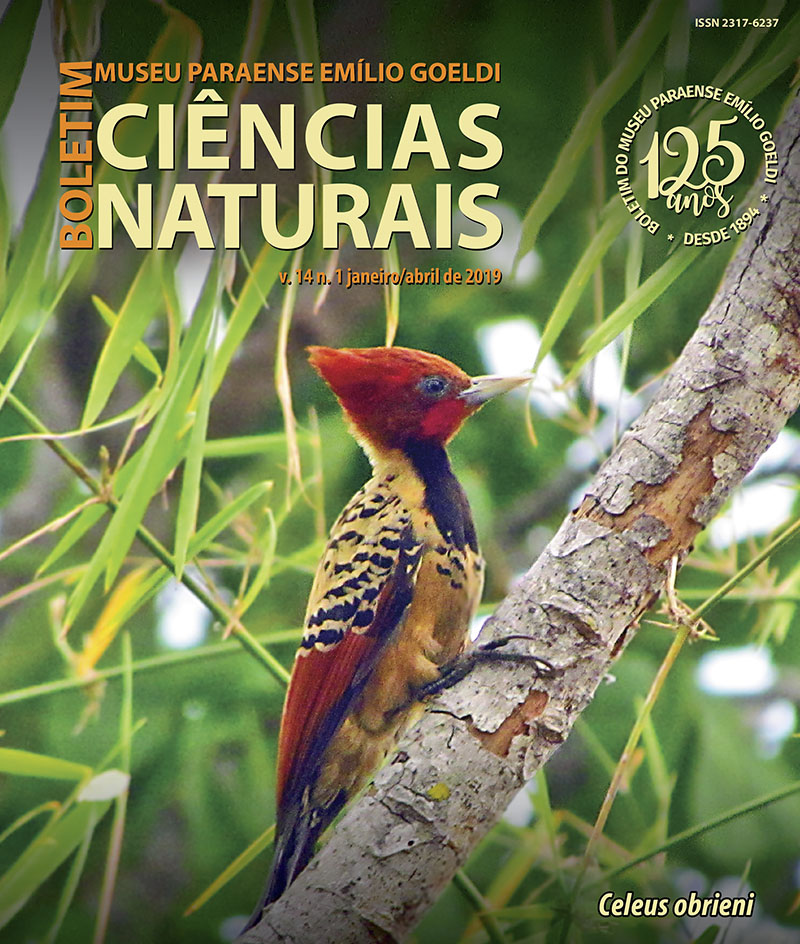Leguminosae diversity and identification key for species in restingas of Pará State, Brazil
DOI:
https://doi.org/10.46357/bcnaturais.v14i1.128Keywords:
Amazon, Fabaceae, Coastal vegetation, Floristic compositionAbstract
Costal dunes in Pará, Brazil, have different physiognomies due to their vegetative composition on a gradient from sea to continent. Leguminosae is one of the most important families in this ecosystem. However, existing studies have only partially addressed legume diversity. Thus, this study aims to list species diversity, provide identification keys, and comment on patterns of geographic distribution and habitat of Leguminosae in Pará coastal dunes. The species list was elaborated from floristic inventories made between September/2014 and September/2016, collections of the main regional herbariums (MG, IAN
and MFS), and specialized literature, according to the citation of the examined material in taxonomic studies on Leguminosae. A total of 67 taxa were recorded in 40 genera. Papilionoideae (43 taxa) was the most representative subfamily (64% of total species), followed by Caesalpinioideae (21 taxa). Inga Mill. and Chamaecrista Moench were the most representative genera, with five species each. The greatest species richness of Leguminosae occurred in the ‘dune field’. Knowledge of the Leguminosae flora in the Pará dunes can subsidize the Management Plan of this ecosystem in Conservation Units, contributing also to future related work and increasing our knowledge of the flora of Pará and the Amazon.
Downloads
Published
Issue
Section
License
Publication means fully assigning and transferring all copyrights of the manuscript to the journal. The Liability Statement and
Assignment of Copyrights will be enclosed with the notice of acceptance. All the authors must sign the document and return it to the journal.






